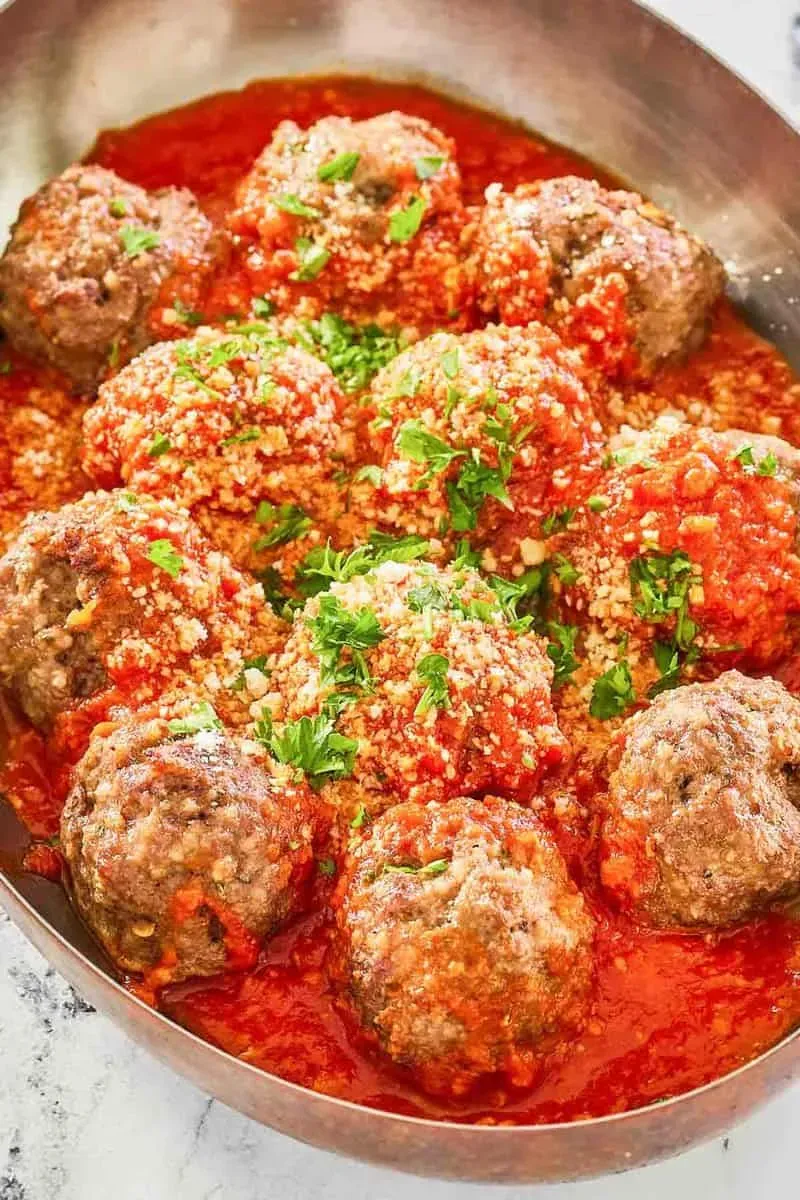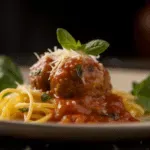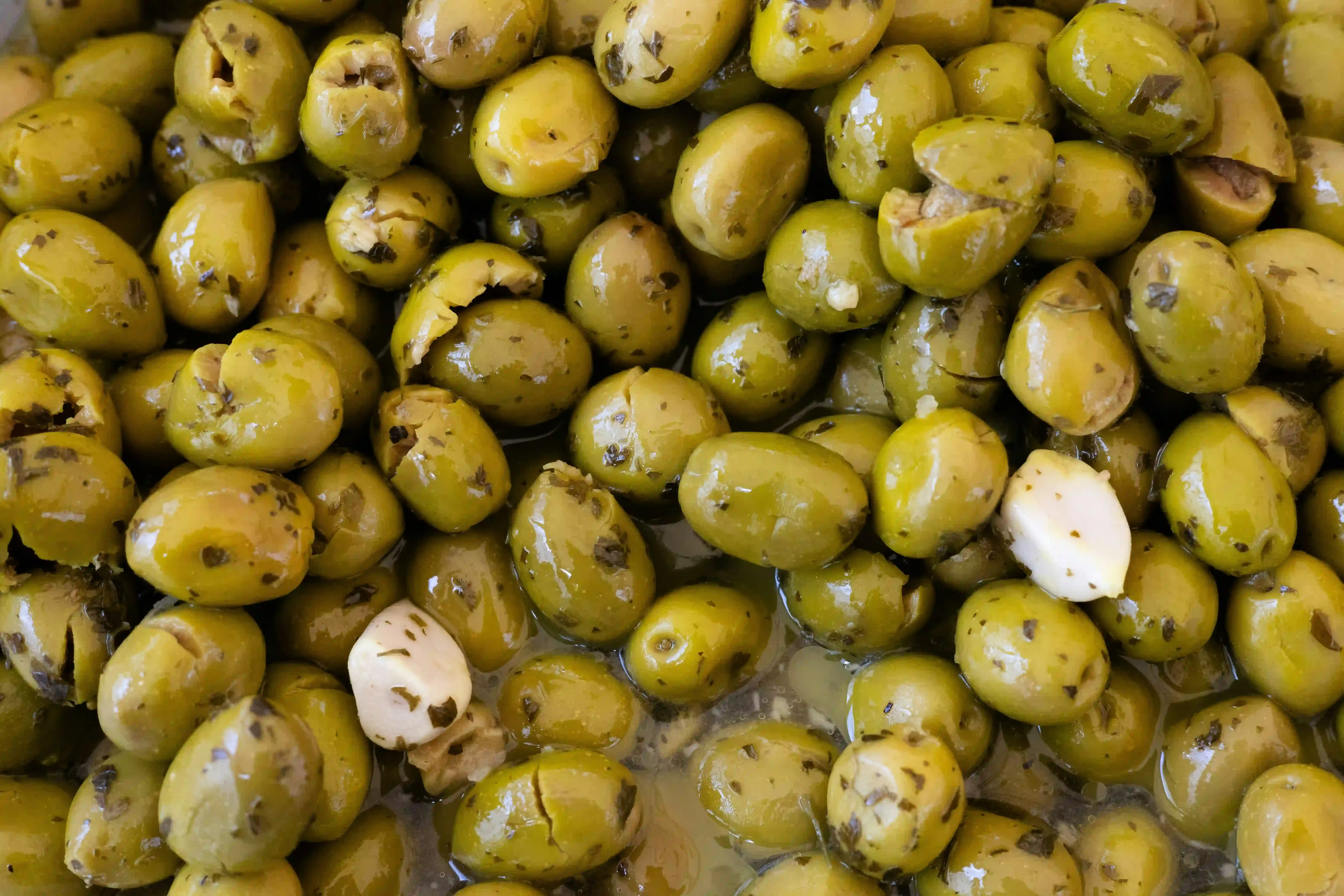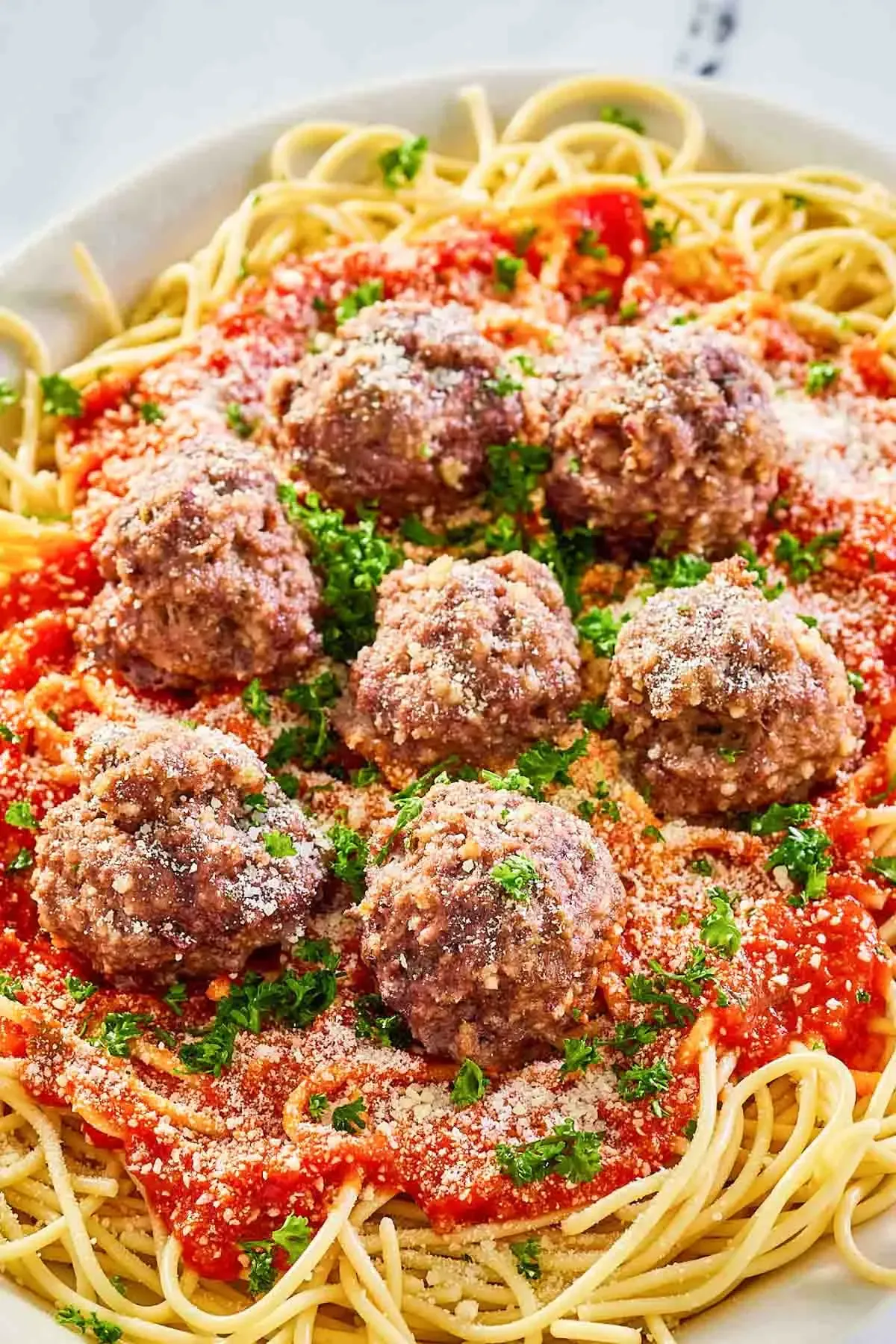Table of Contents
Let's be honest. Sometimes that craving hits. You're thinking about those perfectly seasoned, tender meatballs swimming in marinara sauce, just like the ones you get at Olive Garden. Maybe you don't feel like battling the dinner rush, or perhaps you're just curious if you can actually nail that taste yourself. Well, you're in the right place. Forget the mystery; we're diving deep into replicating that classic flavor with your very own olive garden italian meatball recipe.
What Makes the Olive Garden Italian Meatball Recipe a Fan Favorite?

What Makes the Olive Garden Italian Meatball Recipe a Fan Favorite?
That Specific Blend of Savory Goodness
Let's cut to the chase. People line up for these meatballs because they hit a specific, satisfying note that's hard to replicate without knowing the score. It's not just ground beef tossed in a pan. There's a distinct blend of meats – often pork and maybe even a little veal mixed with the beef – that gives them a richer, more complex flavor than a solo act. Then you have the seasoning. It's not overpowering, but it's definitely there: hints of garlic, dried herbs like parsley and oregano, and just the right amount of salt and pepper to make your taste buds pay attention. They manage to be tender without falling apart, a delicate balance that keeps you coming back for more.
The Comfort Factor and Versatility
Beyond the taste itself, there's the feeling you get when you eat them. They're comfort food, pure and simple. Drenched in a classic marinara sauce, served over spaghetti, or tucked into a sub roll, they just *feel* right. It's the kind of dish that makes you want to lean back and sigh contentedly. Their popularity also stems from how versatile they are. You can serve them as an appetizer, a main course, or even on a pizza if you're feeling adventurous. This adaptability, combined with that reliable, savory flavor profile, cements their status as a go-to item for many diners.
- Rich, balanced meat blend (often beef, pork, veal)
- Classic Italian herbs and seasoning
- Tender texture that holds its shape
- Pairs well with various sauces and dishes
- Evokes a sense of comfort and familiarity
Essential Ingredients for Your Homemade Italian Meatball Recipe

Essential Ingredients for Your Homemade Italian Meatball Recipe
Getting the Meat Right: It's Not Just Beef
so you're aiming for that Olive Garden vibe with your homemade Italian meatball recipe. The first crucial step? The meat blend. You can't just grab a pound of lean ground beef and call it a day. The magic often lies in combining different types of meat. A classic Italian approach uses a mix of ground beef, pork, and sometimes veal. Beef gives you that solid, familiar flavor base. Pork adds necessary fat for moisture and tenderness. Veal, if you use it, contributes a delicate texture. Aim for something around an 80/20 lean-to-fat ratio overall for the best balance of flavor and moisture. Too lean, and they'll be dry; too fatty, and they might feel greasy.
Binders and Moisture: Keeping Them Tender
Once you have your meat blend sorted, you need things to hold it all together and keep it from drying out. This is where your binders come in. Breadcrumbs – preferably plain, stale bread blitzed in a food processor or good quality dried ones – are essential. They absorb moisture and help create a tender texture. Don't forget the liquid! Milk is a common choice; it adds moisture and reacts with the breadcrumbs to create a soft structure. Eggs are your primary binder, helping everything stick together. Some people swear by adding a little grated onion or even zucchini for extra moisture and flavor, but breadcrumbs, milk, and eggs are the non-negotiables for a classic, tender olive garden italian meatball recipe.
Ingredient Type | Common Examples | Purpose |
|---|---|---|
Meats | Ground Beef, Pork, Veal | Flavor base, fat for moisture |
Binders | Breadcrumbs, Eggs | Hold mixture together, texture |
Moisture | Milk, Grated Onion | Prevent dryness, tenderness |
Flavor Boosters: Herbs, Cheese, and Aromatics
Now for the taste. This is where you build those layers of classic Italian flavor for your olive garden italian meatball recipe. Garlic is non-negotiable; finely minced fresh garlic is always best. Dried herbs like parsley and oregano are standard. A pinch of red pepper flakes can add a subtle warmth, though it's optional. Don't skimp on the salt and black pepper – they're crucial for bringing out all the other flavors. And grated Parmesan cheese? Absolutely essential. It adds a salty, nutty depth that screams Italian comfort food. Mix these into your meat mixture, and you're well on your way to meatballs that taste like they came straight from the restaurant kitchen.
Crafting Your Olive Garden Italian Meatball Recipe: A StepbyStep Guide

Crafting Your Olive Garden Italian Meatball Recipe: A StepbyStep Guide
Mixing Your Meat and Flavor Bombs Just Right
Alright, you've gathered your ingredients for this olive garden italian meatball recipe. Now comes the part where it all comes together. Don't just dump everything into a bowl and start mashing like you're angry at it. Gentle hands are key here. In a large mixing bowl, combine your ground meats. Add the breadcrumbs, grated Parmesan cheese, minced garlic, dried herbs (parsley, oregano), salt, pepper, and any red pepper flakes you're using. Whisk your eggs lightly in a separate small bowl, then pour them over the meat mixture. Finally, pour in the milk.
The Gentle Art of Combining Ingredients
Now, the crucial step: mixing. Resist the urge to overmix. Overworking the meat develops the protein too much, resulting in tough, dense meatballs. You want them tender, remember? Use your hands – they're the best tools for this job. Gently fold and combine the ingredients until they are just incorporated. You shouldn't see dry pockets of breadcrumbs or clumps of plain meat. The mixture should be moist but hold together when you scoop a bit. Think of it less like kneading dough and more like fluffing a pillow.
- Combine meats and dry ingredients in a large bowl.
- Add whisked eggs and milk.
- Mix gently with hands until just combined.
- Avoid overmixing to ensure tenderness.
- Mixture should be moist but hold shape.
Rolling and Cooking Your Perfect Spheres
Time to shape these beauties. Wet your hands slightly; this helps prevent the mixture from sticking to you. Scoop out portions of the meat mixture – about 1.5 to 2 inches in diameter is a good size, roughly the size of a golf ball. Gently roll them between your palms to form smooth, uniform spheres. Don't pack them too tightly. Once they're rolled, you have a couple of cooking options for your olive garden italian meatball recipe. You can bake them on a baking sheet lined with parchment paper until they're browned and cooked through, or pan-fry them in a little olive oil for a nice crust before simmering them in your favorite marinara sauce. Baking is often easier for a large batch and less messy.
Pro Tips for Perfecting Your Italian Meatballs

Pro Tips for Perfecting Your Italian Meatballs
Don't Skip the Pan-Sear or Bake First
Look, you might be tempted to just drop those raw meatballs right into the simmering sauce. Don't. Seriously, resist the urge. Giving your meatballs a quick sear in a hot pan with a little olive oil, or baking them on a sheet pan until they're browned, makes a world of difference. This step locks in moisture and builds a crucial layer of flavor through the Maillard reaction – that fancy term for browning. It gives the outside a nice texture that stands up to simmering and prevents them from getting mushy in the sauce. A few minutes on each side in the pan, or about 15-20 minutes in a 375°F oven, is all it takes to elevate your olive garden italian meatball recipe from good to great.
Simmering is Key to Tenderness and Flavor
Once your meatballs have their lovely browned exterior, the real magic happens in the sauce. Don't just serve them immediately. Gently transfer them to your simmering marinara sauce. They need time to finish cooking through and, more importantly, to absorb the flavors of the sauce while releasing some of their own savory goodness into it. Let them simmer gently for at least 30 minutes, ideally longer – up to an hour. Keep the heat low, just a gentle bubble. This slow simmer ensures the meatballs stay incredibly tender and become infused with that rich tomato flavor, making them taste like they've been slow-cooked all day, just like you hope for with a classic olive garden italian meatball recipe.
- Sear or bake meatballs before adding to sauce.
- Simmer gently in sauce for at least 30-60 minutes.
- Use a low heat during simmering.
- Taste your sauce and adjust seasoning before adding meatballs.
- Avoid overcrowding the pan when searing or baking.
Pairing and Serving Your Delicious Olive Garden Italian Meatball Recipe

Pairing and Serving Your Delicious Olive Garden Italian Meatball Recipe
Classic Pairings: Pasta, Subs, and More
Alright, you've put in the work, rolled those beautiful spheres, and simmered them to perfection in that rich sauce. Now comes the fun part: eating them. When you've nailed your olive garden italian meatball recipe, the most classic move is, of course, serving them over a pile of perfectly cooked pasta. Spaghetti is the go-to for a reason – it cradles those meatballs and sauce like they were made for each other. But don't stop there. Penne, fettuccine, or even a short pasta like rotini works great too. Just make sure your pasta is al dente; nobody wants mushy noodles dragging down their glorious meatballs.
But pasta isn't the only game in town. A warm, crusty sub roll piled high with meatballs and sauce, maybe topped with a little melted provolone or mozzarella? That's a sandwich that means business. It’s messy, yes, but utterly satisfying. Think about slicing them and putting them on a pizza, or even just serving them in a bowl with extra sauce for dipping crusty bread. The possibilities are pretty wide open once you have this core olive garden italian meatball recipe locked down.
- Spaghetti or other pasta shapes
- Meatball sub sandwiches
- Served over polenta or mashed potatoes
- As a pizza topping
- In a bowl with crusty bread for dipping
Beyond the Plate: Appetizers and Leftovers
Who says meatballs are only for dinner? Your homemade olive garden italian meatball recipe makes for a fantastic appetizer. Stick a toothpick in each one and arrange them on a platter with a side of warm marinara for dipping at your next gathering. They disappear fast, trust me. It’s a simple, crowd-pleasing move that feels a bit more special than just chips and dip. Plus, making a big batch means you'll likely have... well, theoretically, you'll have leftovers.
Let's be honest, "leftover meatballs" is often a theoretical concept in my house. If you *do* manage to squirrel some away, they reheat beautifully. Pop them back in the sauce on the stove or even gently in the microwave. They're just as good the next day, sometimes even better as the flavors have had more time to meld. A meatball sub for lunch made with last night's dinner? Pure genius.
Completing the Meal: Sides and Drinks
You've got the star of the show – your incredible olive garden italian meatball recipe – and its perfect pairing. Now, how do you round out the meal? A simple side salad with a light vinaigrette is always a good call to cut through the richness. Garlic bread or those iconic breadsticks are practically mandatory for soaking up every last drop of sauce. Roasted or steamed vegetables like broccoli or green beans can add some color and nutrients without competing with the main flavors.
As for drinks, keep it classic. A glass of red wine – a Chianti, Sangiovese, or even a simple Montepulciano – pairs wonderfully with the tomato sauce and savory meat. If wine isn't your thing, sparkling water with lemon, or even a classic iced tea works just fine. The goal is to complement, not overpower, the deliciousness you've created with your homemade olive garden italian meatball recipe.
Your Homemade Olive Garden Meatballs Await
So there you have it. You've navigated the ingredients, followed the steps, and hopefully, you're now looking at a batch of homemade meatballs that rival the ones you've enjoyed out. Recreating the olive garden italian meatball recipe at home takes a little effort, sure, but the payoff is significant – control over your ingredients, the satisfaction of doing it yourself, and that familiar, comforting taste without leaving your kitchen. They might not be *exactly* identical – restaurant kitchens have their own secrets, after all – but they should be pretty darn close and undeniably delicious. Now go forth, grab a fork, and enjoy the fruits of your labor.